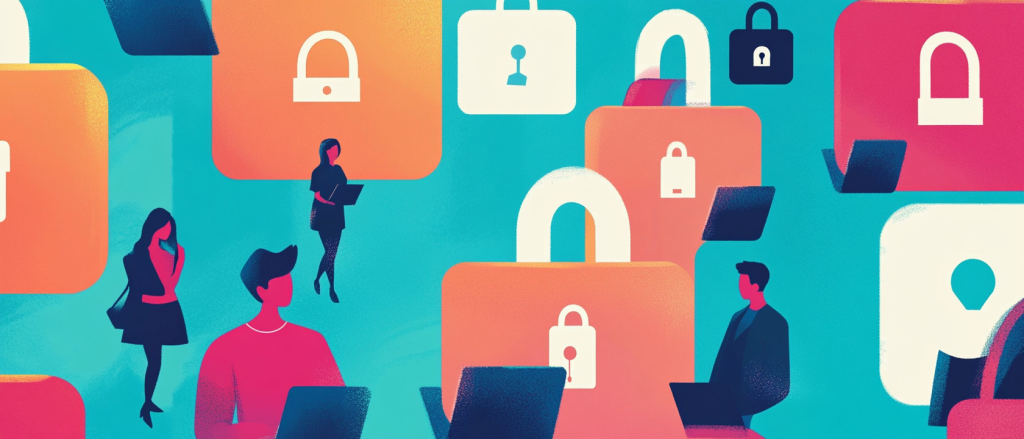The rise of digital platforms, social media, and online services has made securing personal and professional accounts more critical than ever. Data breaches and cyberattacks can result in stolen information, identity theft, and significant financial loss. Protecting your accounts starts with two key strategies: creating stronger passwords and enabling two-factor authentication (2FA).
This guide provides practical tips to help you set up a secure account while maintaining convenience in accessing your favorite platforms, including innovative social networking platforms like Easybie.
Why Account Security Matters
Cybersecurity threats are evolving rapidly. A single weak password or the lack of 2FA can expose personal information, financial details, and even your online reputation. By implementing robust security practices, you minimize these risks and safeguard sensitive information.
Stronger Passwords: Building Your First Defense
Passwords are your first line of defense against unauthorized access. Here are proven tips to create and maintain secure passwords:
1. Make Passwords Long and Complex
A strong password should be at least 12–16 characters long and include:
- Uppercase and lowercase letters
- Numbers
- Special characters (e.g., !, @, #, $)
Example: Instead of password123, use P@$$w0rd!23$.
2. Avoid Common Words and Patterns
Hackers often use dictionaries of common passwords or simple patterns to crack accounts. Avoid:
- Personal information (e.g., birthdays, names)
- Sequential patterns (e.g.,
12345,abcdef)
3. Use a Password Manager
Password managers like LastPass, 1Password, or Dashlane can generate, store, and autofill strong passwords. This eliminates the need to remember multiple complex passwords while keeping them secure.
4. Avoid Reusing Passwords
Using the same password for multiple accounts increases the risk of widespread breaches. If one account is compromised, hackers could access all accounts with the same password.
5. Regularly Update Your Passwords
Changing your passwords every 6–12 months reduces the risk of prolonged unauthorized access, especially if a breach occurs.

Two-Factor Authentication: Adding an Extra Layer of Security
Two-factor authentication (2FA) enhances account security by requiring a second verification step in addition to your password. Even if a hacker obtains your password, 2FA significantly reduces their chances of accessing your account.
1. Types of Two-Factor Authentication
There are several forms of 2FA, each offering varying levels of security:
- SMS-Based Authentication: A code is sent to your mobile phone. While convenient, this method is susceptible to SIM-swapping attacks.
- Authenticator Apps: Apps like Google Authenticator, Authy, or Microsoft Authenticator generate time-sensitive codes.
- Hardware Tokens: Physical devices, like YubiKey, that plug into your computer or connect wirelessly.
- Biometric Authentication: Fingerprint scans, facial recognition, or voice authentication.
2. How to Enable 2FA
Most platforms, including Easybie, offer 2FA settings. Here’s how to enable it:
- Navigate to the Account Settings section.
- Locate the Two-Factor Authentication option.
- Choose your preferred method (SMS, authenticator app, or hardware token).
- Follow the instructions to link your authentication method.
3. Backup and Recovery Options
2FA can lock you out if you lose access to your second verification method. Always:
- Store recovery codes in a safe place.
- Set up multiple 2FA methods if possible.
Best Practices for Maintaining Account Security
Beyond strong passwords and 2FA, additional practices enhance your overall account security.
1. Use Unique Usernames
Avoid using easily guessed usernames, especially if they are linked to personal information.
2. Monitor Your Accounts Regularly
Check your account activity for unauthorized logins or suspicious changes. Platforms like Easybie notify users of unusual activity.
3. Be Wary of Phishing Scams
Cybercriminals often use fake emails or websites to steal your login credentials. Protect yourself by:
- Verifying the sender’s email address.
- Avoiding links in unsolicited emails.
- Manually typing URLs into your browser.
4. Secure Your Devices
A secure account is only as safe as the device used to access it. Implement:
- Regular software updates
- Antivirus programs
- Device encryption
5. Use Private Networks
Avoid logging into sensitive accounts on public Wi-Fi networks. Use a VPN for added security when accessing accounts outside your secure home or office network.
How Easybie Prioritizes User Security
Easybie, the next-generation social networking platform, emphasizes user security with robust features:
- Privacy Controls: Easybie allows users to customize who can view their profiles, posts, and activities.
- Encrypted Communications: Chats and messages on Easybie are encrypted to ensure privacy.
- Account Monitoring: Notifications alert users of any suspicious activity.
- Comprehensive Settings: Easybie’s user-friendly settings interface includes password management, 2FA options, and detailed privacy configurations.
To learn more about Easybie’s features or to create your secure account, visit Easybie’s Account Settings or sign up today: Sign up on Easybie.
Call to Action
Securing your online accounts is not optional—it’s essential. By combining strong passwords, two-factor authentication, and proactive security measures, you can significantly reduce the risk of unauthorized access. Take the first step in protecting your digital life by reviewing your accounts today.
Explore the innovative features of Easybie, a platform built with user privacy and security in mind. Sign up now to join a secure, creative, and user-centric social networking community: Join Easybie.


